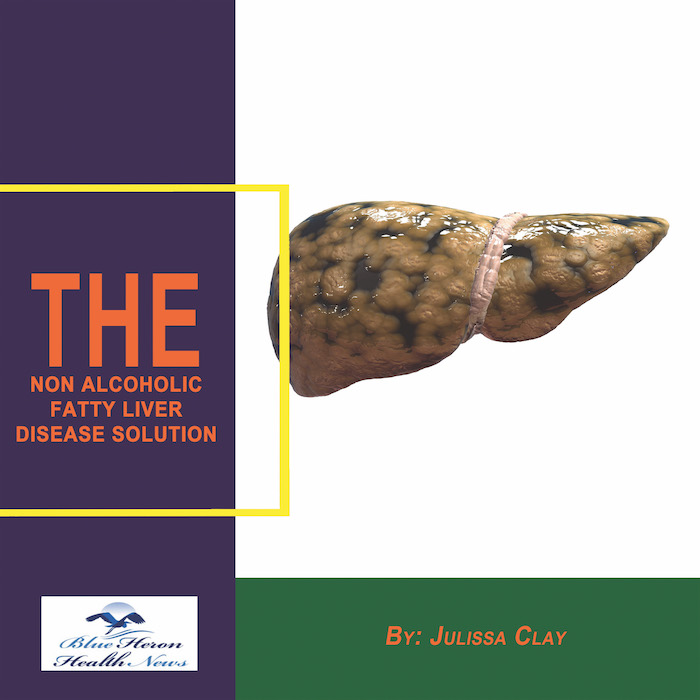
The Non Alcoholic Fatty Liver Strategy™ By Julissa Clay the program discussed in the eBook, Non Alcoholic Fatty Liver Strategy, has been designed to improve the health of your liver just by eliminating the factors and reversing the effects caused by your fatty liver. It has been made an easy-to-follow program by breaking it up into lists of recipes and stepwise instructions. Everyone can use this clinically proven program without any risk. You can claim your money back within 60 days if its results are not appealing to you.
How does high cholesterol contribute to fatty liver disease?
High cholesterol can contribute to the development and progression of fatty liver disease, particularly non-alcoholic fatty liver disease (NAFLD). NAFLD is characterized by the accumulation of fat in liver cells in individuals who consume little to no alcohol. The relationship between high cholesterol and fatty liver disease involves several mechanisms:
1. Increased Fat Accumulation in the Liver:
- Elevated cholesterol levels, especially low-density lipoprotein (LDL) cholesterol and triglycerides, can promote the storage of fat in the liver. When there is an excess of circulating lipids (fats) in the bloodstream, they are taken up by liver cells and stored, leading to fatty liver.
- High levels of LDL cholesterol can lead to the accumulation of cholesterol within liver cells, which contributes to liver cell dysfunction and inflammation, a key characteristic of NAFLD.
- Triglyceride-rich lipoproteins can also contribute to fat buildup in the liver. Excess triglycerides can be deposited in the liver cells, which can lead to non-alcoholic steatosis (simple fatty liver) and, over time, to more severe liver conditions like non-alcoholic steatohepatitis (NASH), cirrhosis, and even liver failure.
2. Impaired Lipid Metabolism:
- High cholesterol can impair normal lipid metabolism in the liver. The liver plays a key role in processing fats, including synthesizing and breaking down cholesterol and triglycerides. In individuals with high cholesterol, the liver may become overwhelmed by the excess lipids, leading to inefficient processing and fatty liver buildup.
- The liver’s ability to export fat through lipoproteins (such as VLDL – very low-density lipoproteins) may become impaired in people with high cholesterol. This results in a higher concentration of fat within the liver, contributing to fatty liver disease.
3. Insulin Resistance:
- High cholesterol is often associated with insulin resistance, a condition where the body’s cells become less responsive to insulin. Insulin resistance is a key factor in the development of NAFLD.
- When the liver becomes insulin-resistant, it takes up more free fatty acids from the bloodstream and deposits them in liver cells, leading to fatty liver. Additionally, insulin resistance increases the liver’s production of triglycerides, further promoting fat buildup.
4. Inflammation and Oxidative Stress:
- High cholesterol levels, particularly when combined with elevated triglycerides, can promote inflammation and oxidative stress in the liver. This can lead to liver cell injury and the progression from simple fatty liver (steatosis) to more severe stages, such as NASH (non-alcoholic steatohepatitis).
- The accumulation of fat in liver cells can lead to the production of reactive oxygen species (ROS), which damage liver cells and promote inflammation. This chronic inflammation can worsen liver function and increase the risk of developing cirrhosis or liver cancer.
5. Atherosclerosis and Fatty Liver Disease:
- High cholesterol contributes to the development of atherosclerosis (narrowing and hardening of the arteries due to cholesterol plaque buildup). There is evidence suggesting that atherosclerosis and NAFLD often coexist, and the presence of high cholesterol may increase the risk of both conditions.
- The underlying mechanisms for this connection are complex and may involve shared risk factors, such as insulin resistance, obesity, and poor dietary habits. Both conditions share common pathways of inflammation and lipid metabolism dysfunction.
6. Fatty Liver as a Risk Factor for High Cholesterol:
- On the flip side, fatty liver disease can contribute to elevated cholesterol levels. As liver function deteriorates, its ability to process and clear lipids from the blood may be impaired, leading to higher LDL cholesterol and triglyceride levels. This creates a vicious cycle, where high cholesterol worsens fatty liver disease, and fatty liver disease can worsen cholesterol imbalances.
7. Impact of Visceral Fat:
- Visceral fat, or fat stored around the abdominal organs, is strongly associated with both high cholesterol levels and fatty liver disease. High levels of visceral fat promote lipolysis (the breakdown of fat), leading to the release of free fatty acids into the bloodstream. These fatty acids are taken up by the liver and contribute to fat accumulation in liver cells.
- The presence of visceral fat increases the risk of both dyslipidemia (abnormal cholesterol levels) and NAFLD, creating a cycle of worsening metabolic dysfunction.
Summary:
High cholesterol contributes to fatty liver disease through several mechanisms:
- Excess fat accumulation in liver cells, especially from elevated LDL cholesterol and triglycerides.
- Impaired lipid metabolism and difficulty processing fats in the liver.
- The development of insulin resistance, which increases fat storage in the liver.
- Increased inflammation and oxidative stress, which damage liver cells and promote disease progression.
- Atherosclerosis and visceral fat contribute to the worsening of both conditions.
Managing high cholesterol through lifestyle changes (diet, exercise) and medications (such as statins) is crucial in preventing or slowing the progression of fatty liver disease. Reducing cholesterol levels can help alleviate some of the liver’s burden and improve overall liver function.
The Non Alcoholic Fatty Liver Strategy™ By Julissa Clay the program discussed in the eBook, Non Alcoholic Fatty Liver Strategy, has been designed to improve the health of your liver just by eliminating the factors and reversing the effects caused by your fatty liver. It has been made an easy-to-follow program by breaking it up into lists of recipes and stepwise instructions. Everyone can use this clinically proven program without any risk. You can claim your money back within 60 days if its results are not appealing to you.